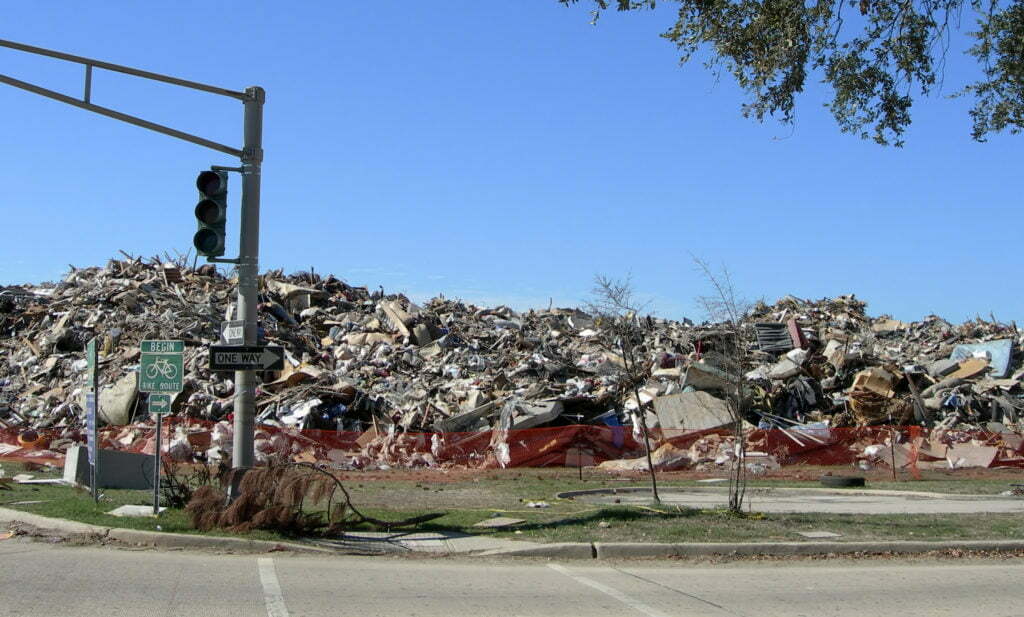Tips for Managing Debris Removal

A pile of debris left from Hurricane Katrina cleanup in the Lakeview area of New Orleans, taking up several city blocks
When Hurricanes Katrina and Rita hit the coastal city of New Orleans, Louisiana in 2005, they left a trail of destruction in their wake, including a monumental amount of debris. Dr. Chuck Carr Brown, secretary of the Louisiana Department of Environmental Quality, managed the massive debris removal effort in New Orleans.
Below are Brown’s tips for managing the debris removal process. Be sure to also check out the IBTS Debris Management Plan Wizard, which provides a step-by-step guide through the debris management process, including FEMA requirements.
Develop prepositioned contracts with debris removal contractors.
- “These are always a good idea,” says Brown. However, due to the infrequency of natural disasters, be aware that the original contractors selected may not be available to respond to task orders.
Identify debris management site locations in advance.
- “Debris management sites must meet all FEMA and all environmental guidelines,” says Brown. “Sites that are preselected can be prescreened for necessary reimbursement qualifications.”
Be prepared to monitor debris management sites.
- Applicants for FEMA Public Assistance funding need to provide documentation demonstrating that contractor debris removal and disposal activities were monitored. “This creates large staffing demands,” says Brown. Preparing in advance for how monitoring activities will be staffed and reported can help save headaches later on.
Load tickets must be properly completed and recorded.
- Load tickets are issued onsite, and a copy is retained by loading site monitors. “These are necessary to verify the volume and type of debris delivered to the site,” says Brown. “They’re very important. This is how you get paid.”
Ensure precise and well-organized records.
- “Sound record keeping is a must,” says Brown. “The time, volume, type, location, etc. are all very important.”
Identify proper final disposal sites.
- Landfills must be permitted by the state environmental agency. “This is to ensure that the particular debris being disposed of is going to the right place for proper disposal,” says Brown.
